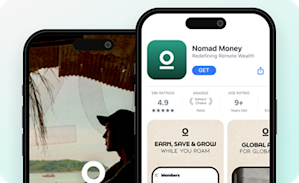Mighty Encyclopedia
Customer Engagement
What is customer engagement?
Customer engagement is the practice of cultivating meaningful interactions between a brand or company and the people who purchase its products or services. It is usually initiated by the brand, but requires willing participation by both sides, resulting in a relationship between the two in which customers are emotionally engaged.
Why is customer engagement important?
Good customer engagement benefits both the company or brand and the customer.
The brand benefits from customer engagement because it generates interest in its product, creates more sales, and collects valuable feedback on the product or service.
Engaged customers are also more likely to be repeat customers and will advocate for your brand through "word of mouth." For example, Gallup reports that in the B2B space, "Companies that successfully engage their B2B customers realize 63% lower customer attrition, 55% higher share of wallet, and 50% higher productivity."
All this means that engaging customers will increase their lifetime value and reduce churn. The two best ways to increase your profitability are to either decrease your cost of acquisition (CAC) or increase yourcustomer lifetime value (CLV) (or both!). Good customer engagement does both of these things, reducing CAC through word of mouth and raising CLV by helping people stick around.
5 tricks you can use to measure customer engagement
1. Watch your customer lifetime value
If customer engagement is working, you should see your retention rates go up (especially if you have a membership or recurring revenue monetization model). As we explained above, raising your retention rates brings up your customers' lifetime value.
2. Survey customers
One simple way to measure customer engagement is to survey customers. For example, this can be done with surveys that ask questions like "Where did you hear about us?" or, "Would you be willing to recommend us to a friend?" Some people may do these surveys because they love your brand, but if you want honest feedback it's a good idea to offer a prize or incentive. (You could use a metric like a Net Promoter Score to interpret the survey data).
3. Measure customer satisfaction
Since a customer survey can be intensive, there are alternative quick options for measuring customer engagement and how they feel about your brand. For example, the brand Happy or Not offers both physical and digital push-button solutions that give you customer feedback in milliseconds--customers push one of four buttons ranging from a smiley face to a sad face.
While this metric is ultimately about customer experience, good customer engagement should increase the smileys.
4. Listen to your social media
Social media listening can be a valuable tool for measuring your customer engagement. Monitor social media to see what's being said about your product or brand (or if anything is being said about it).
While every brand wants raving fans, sometimes even criticism of your product is useful if it helps you get better. Plus, it’s an opportunity to engage your customers by thanking them for the feedback, acknowledging their frustration, and offering solutions.
Social listening can tell you what people are saying, the good, the bad, and the ugly.
You can also check impression and post-engagement scores (i.e. click through rates). If a lot of people are seeing your posts but engagement is low you might need better posts.
5. Check your churn rate
Churn rate is a simple metric that essentially measures the ratio of customers who will stay with your product or service over a given period of time. For a membership site, churn is the ratio of people who leave over a given period from the total customers acquired. The more your customers are engaged, the lower churn should be for a membership business.
For example, if you run a gym and customers are regularly engaged and feel like they can connect, they’ll keep coming! If they feel alienated or intimidated when they show up, they’ll eventually stop.
Build a $1 Million Community
This free masterclass went viral—sign up to learn why.





